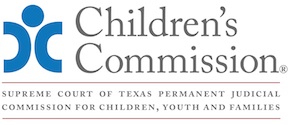D. Considerations for Dual Status Youth
Several large, urban areas have implemented the Crossover Youth Practice Model developed by Georgetown University or the RFK Children's Action Corps Dual Status Youth and Probation Reform Models, including Travis, Bexar, Harris, McLennan, Tarrant, El Paso, and Dallas Counties.[296] The Child Protection Courts also have jurisdiction to hear dual status cases pursuant to Tex. Fam. Code Chapters 51 and 201. These courts utilize a “one family, one court” model where the same judge hears both the child welfare and juvenile justice cases.
For cases involving dual status youth, some court considerations include:
• Upcoming court dates for both the child welfare and juvenile cases;
• Progress of each case;
• What services are being provided in each case;
• Disposition in the juvenile case, including placement options if the child is not going to be released on probation; and
• Whether the records in the juvenile case can later be sealed.[297]
Special Issue: If more than one court is involved, coordination is critical to ensure statutory timelines are met and there is minimal duplication of services. Inquire about the status of a juvenile case for a dual status child on a regular basis, at least during each statutory child welfare hearing, and more often if the child is in detention.
